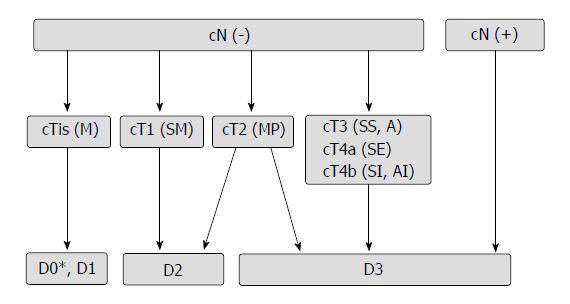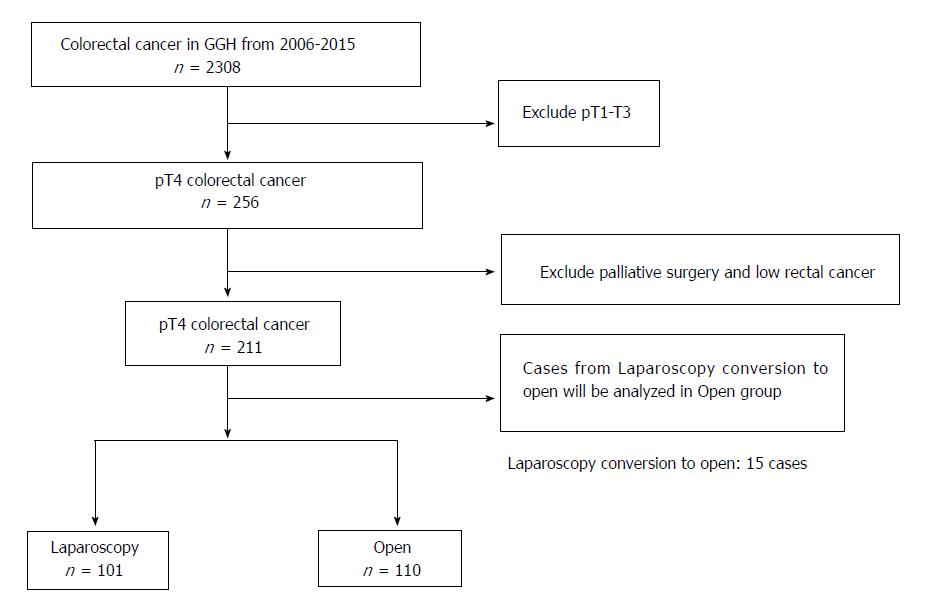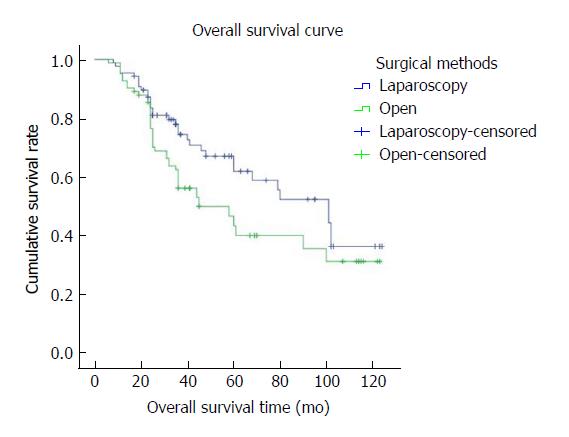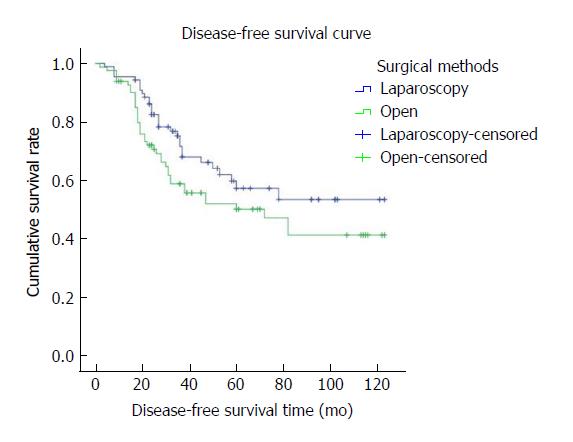Copyright
©The Author(s) 2018.
World J Gastroenterol. Jan 7, 2018; 24(1): 76-86
Published online Jan 7, 2018. doi: 10.3748/wjg.v24.i1.76
Published online Jan 7, 2018. doi: 10.3748/wjg.v24.i1.76
Figure 1 Flowchart for selection of the extent of lymph node dissection (from reference 9).
Figure 2 Study flowchart showing patient selection.
GGH: Guangdong general hospital; pT4: Pathological proven T4.
Figure 3 The overall survival curve shows that 3- and 5-year overall survival rates were 74.
9% and 60.5%, respectively, in the LAP group and 62.4% and 46.5%, respectively, in the OPEN group. There was no significant difference between the LAP and OPEN groups (P = 0.060).
Figure 4 The disease-free survival curve shows that the 3- and 5-year disease-free survival rates were 68.
0% and 57.3%, respectively, in the LAP group and 55.8% and 39.8%, respectively, in the OPEN group. There was no significant difference between the LAP and OPEN groups (P = 0.053).
- Citation: Yang ZF, Wu DQ, Wang JJ, Lv ZJ, Li Y. Short- and long-term outcomes following laparoscopic vs open surgery for pathological T4 colorectal cancer: 10 years of experience in a single center. World J Gastroenterol 2018; 24(1): 76-86
- URL: https://www.wjgnet.com/1007-9327/full/v24/i1/76.htm
- DOI: https://dx.doi.org/10.3748/wjg.v24.i1.76
















